With a shift of gears – and the method of propulsion – this weekend trip takes a turn into the future with an electric romp through the heart of Al Ain – baby stroller and wheelchair accessible, and an awesome jogging route – this is a delightful bike ride for the family during the winter months.
The 8km circuit will take you along shady pavements and through tranquil parks, offering stops to visit some of Al Ain’s best attractions: Jahili Fort, its nearby public park, Sheikh Zayed’s birthplace and Al Ain Palace Museum, traversing the entire oasis and swinging by the Al Ain National Museum and Sultan Fort at the far end, before circling back to the starting point along the old souq.

I came across my vehicle by chance at the Yamaha showroom as I picked up a quad testride. The clever marketing man at at Al Yousuf Motors pointed to it: “Why don’t you take this as well? I’d like to know what you think.” I was not amused. Me? Self-proclaimed Motorhead Supreme being offered a pedal-driven contraption basically unchanged in mechanical design from the 1800s? And with a large basket hanging off the handlebars?
But then I noticed the unusually thick pillar under the saddle and realised it contained a battery, and I slowly understood there was a 200W electric motor hidden somewhere in the rear wheel hub; well, as long as there’s a motor involved, I’m game.
The manufacturer of the Phoenix claims a range of 27km on a single battery charge and a top speed of 25kph. I rode it like a demon, fully loaded plus my adult daughter on the back, stop-and-go over cobblestones and up and down pavements, and managed a top speed of 24kph with a little downhill help, and the battery remained on the green light showing full available power even after one and a half hours of heavy use over a distance of 9km. Add to that the fact that you zip along in wonderful silence, consuming no combustible fuel and emitting no toxic gases.
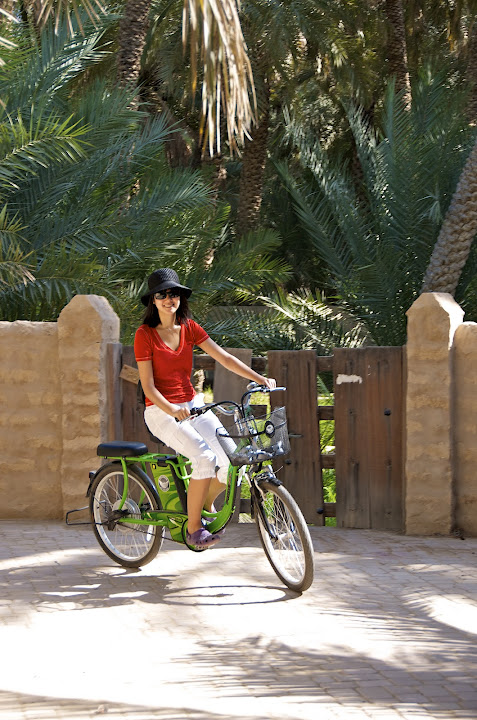
It turns out that the Phoenix electric bike is ideal for quiet rides through beautiful parks and, in our case, one of the most important oases in the United Arab Emirates: the Al Ain Oasis, situated between Al Jahili and Sarooj, and running alongside the main wadi. And, no – that’s not me on the bike! LOL
The Abu Dhabi Authority for Culture and Heritage has this to say about the Al Ain Oasis: “The city of Al Ain takes its name from this oasis which, according to archaeological evidence from the Hili site, has probably been cultivated for at least three thousand years.
The oasis covers an area of approximately 1,200 hectares (nearly 3,000 acres) and contains over 147,000 date palms, up to 100 different varieties amongst them. The date palms are occasionally interspersed with other fruit trees including mangoes, oranges, bananas, figs and jujubes (locally known as sidr). The date orchards form a patchwork of individually owned plots, divided by a maze of pathways varying from one to seven metres in width. The boundary walls were originally made of mud brick, although most of them have been renovated using more modern materials.
Early Arab farmers discovered the need to cultivate the date palm to maximize its fruit production. Dates have been harvested in the region by countless generations who depended on the fruit as a high-energy supplement to their diet of cereals, milks, dried fish and meat. The date palm was therefore, and still is, a highly prized commodity.”
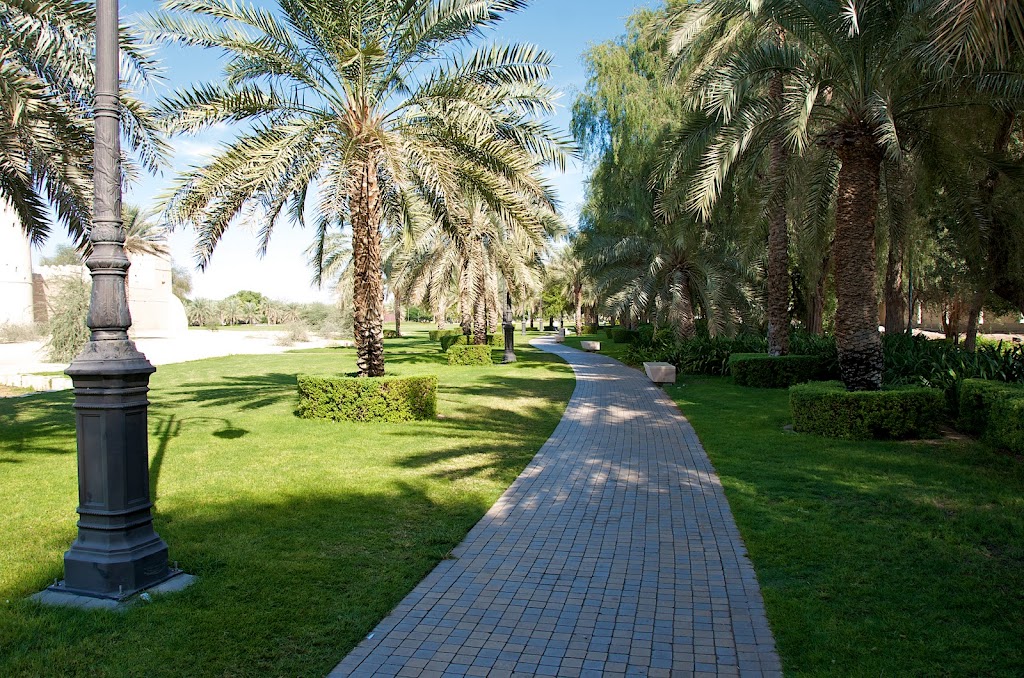

Download the KML file for your GPS by clicking here. Once downloaded, you can import the file into your GPS device and take it on the road, or double-click that file and it will open automatically in Google Earth if you have that installed (all adventurers should! Google Earth).
And here is an interactive map of the route.
View Electric Oasis in a larger map
Concisely, for our trip, start from the Al Ain Rotana Hotel parking lot at waypoint 1, and facing away from the hotel, head right (east) along the pavement, towards Jebel Hafeet mountain, which can be seen in the distance.
Jahili Fort, at waypoint 2, is open to the public and well-staffed with a visitors’ centre. Although it may appear a bit empty as you peak through the large front gate, do venture in for a little exploratory detour; it will be well worth it.
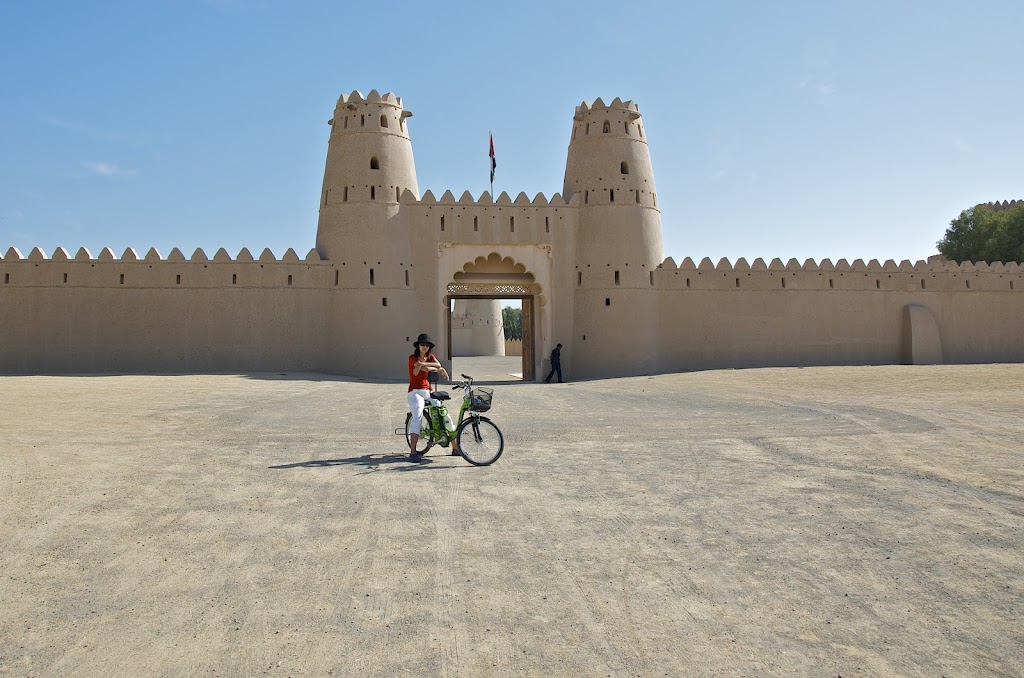
Continue east along the footpath, circle around Jahili Fort away from the street and into the public gardens, on the pathway and back around behind the fort, entering the adjacent Jahili Park and then keeping right in order to traverse it completely and exit at the back gate, at waypoint 3.
From there, cross the road and navigate a quiet side street to reach the pavement of Al Ain Street to then arrive at waypoint 4, the Al Ain Palace Museum, built in 1937 and birthplace of the founder of the United Arab Emirates, Sheikh Zayed bin Sultan Al Nahyan.
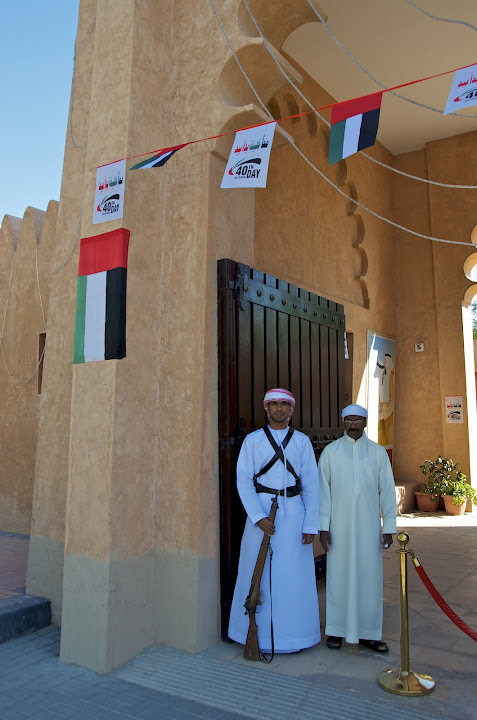
After visiting the Al Ain Palace historical complex, continue east until the fortress wall ends and an opening into the oasis presents itself, at waypoint 5.
Pass the ancient Obaid Mosque, waypoint 7, and farther along, the elegant Sheikh Khalifa Mosque at waypoint 8.

Continue east towards an exit gate (waypoint 9), which will be behind the Al Ain National Museum and the Sultan Fort, built in 1910. Circle around them and do take the time to visit the museum as it contains all sorts of artefacts of both archaeological and ethnographic importance.
As you emerge on the northern side of the museum complex, keep circling around anti-clockwise to re-enter the oasis at waypoint 10 and, now heading back towards the west, follow the oasis pathway straight through and out the other end, at an abandoned heritage restaurant at waypoint 12.
Head right/north, towards the roundabout, where you will cross carefully to the left at waypoint 13, and continue along the footpath.
You will soon reach the same busy road that you had after you left Jahili Park, but you are now farther north. Cross the traffic lights at waypoint 14 and then scoot into the side street if you prefer to stay away from the busy road, and you will soon emerge at the north-eastern corner of Jahili Park, where the jasmine gardens will greet your return.
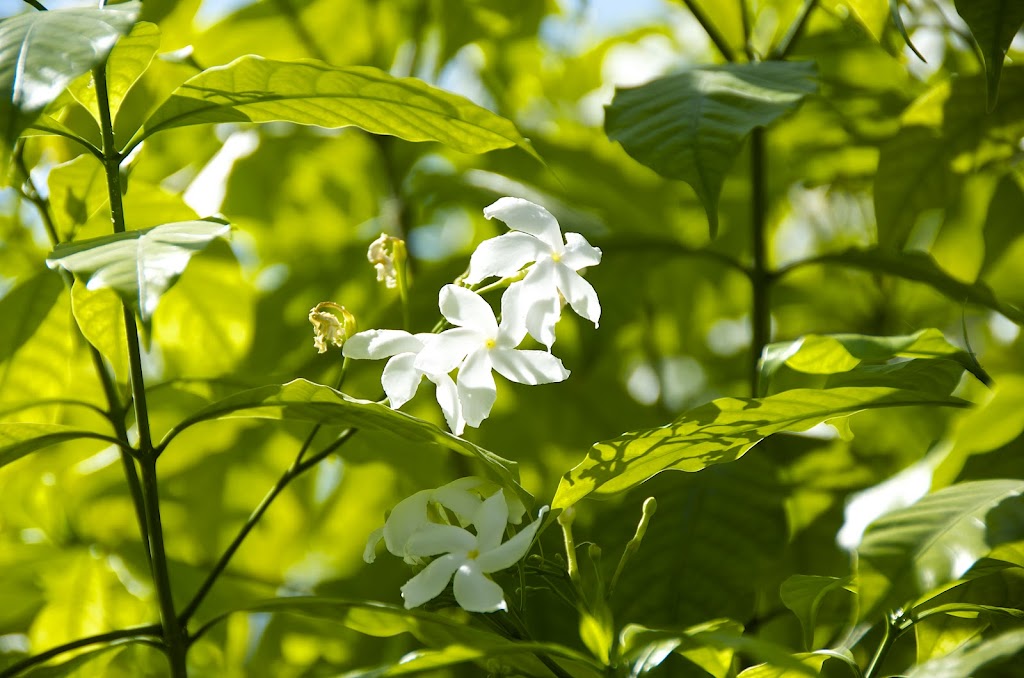
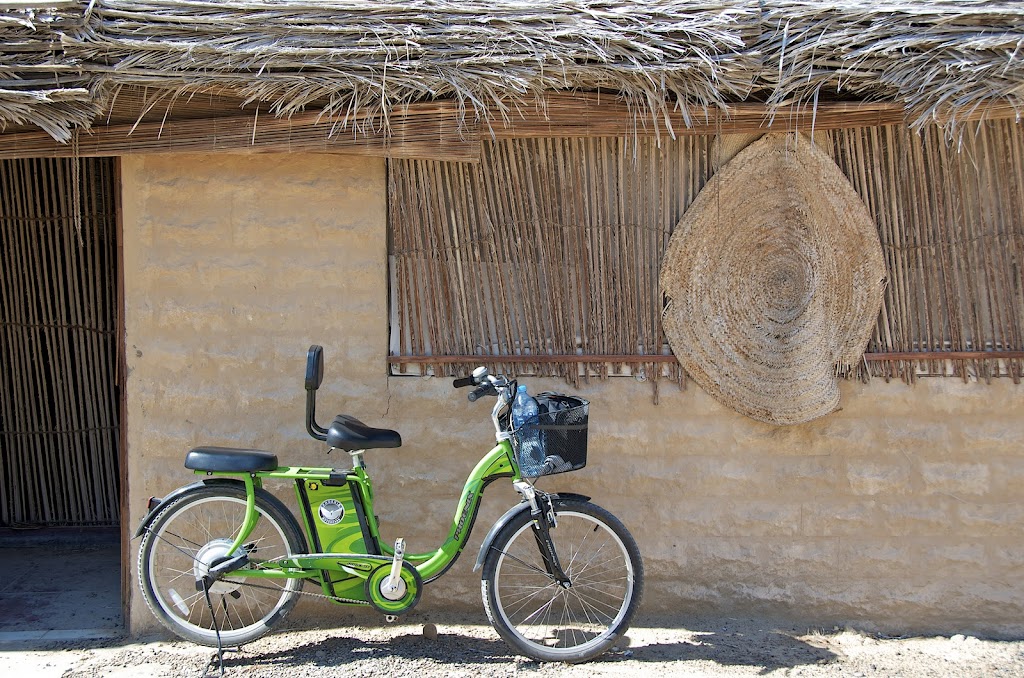
View a pdf file of the original article, as published in February 2012, or read the archived newspaper article on The National website here.
My disclaimer is here.
